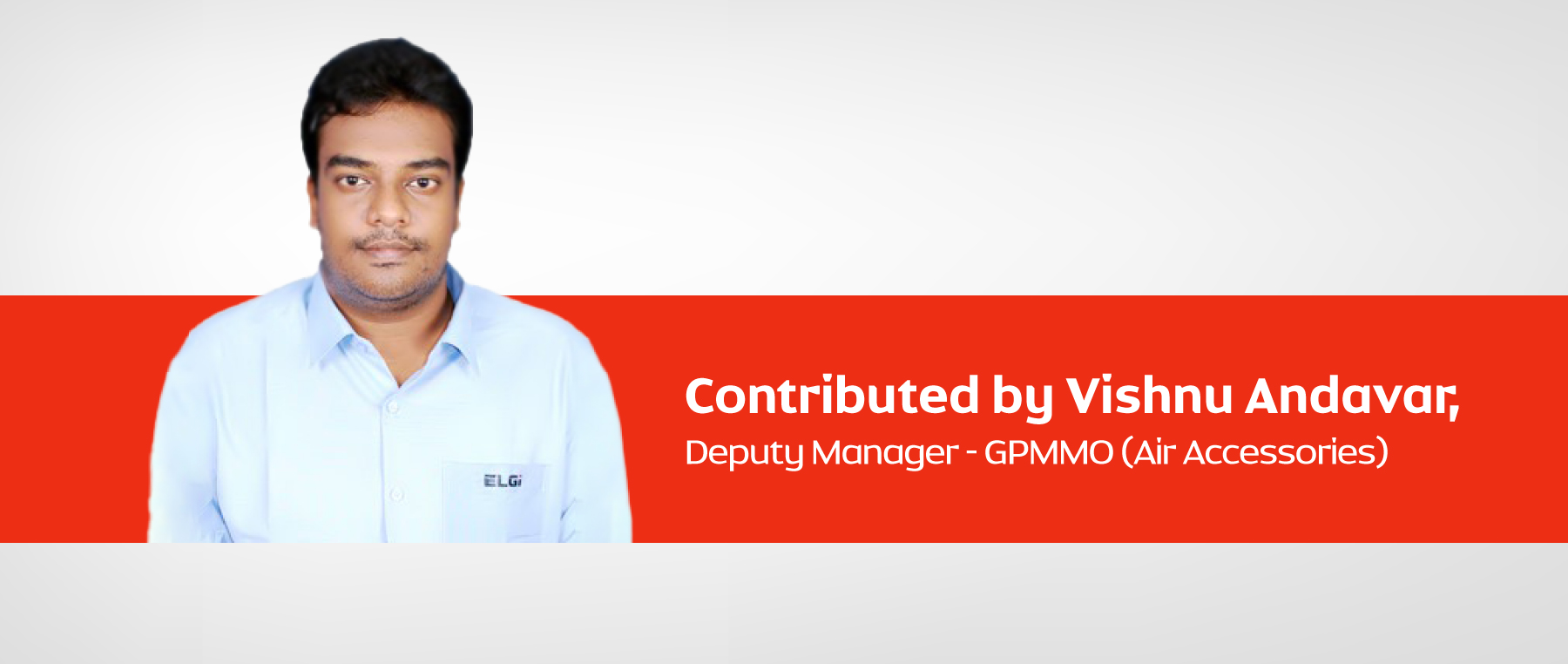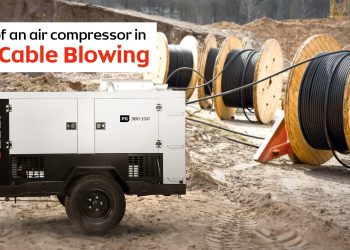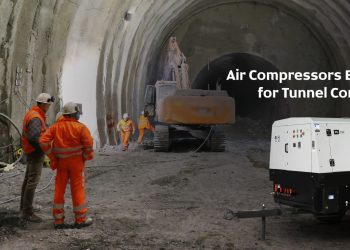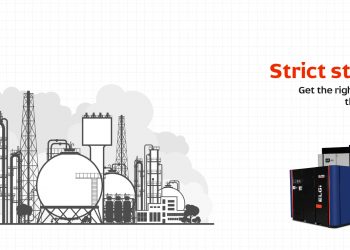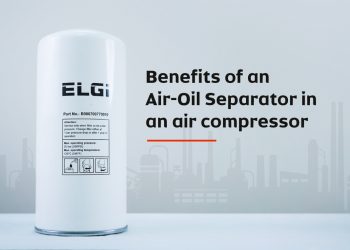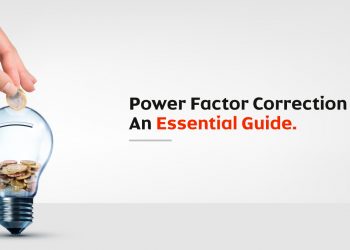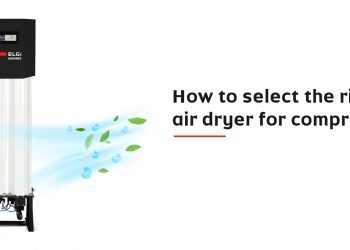How to remove contaminants from your compressed air system?
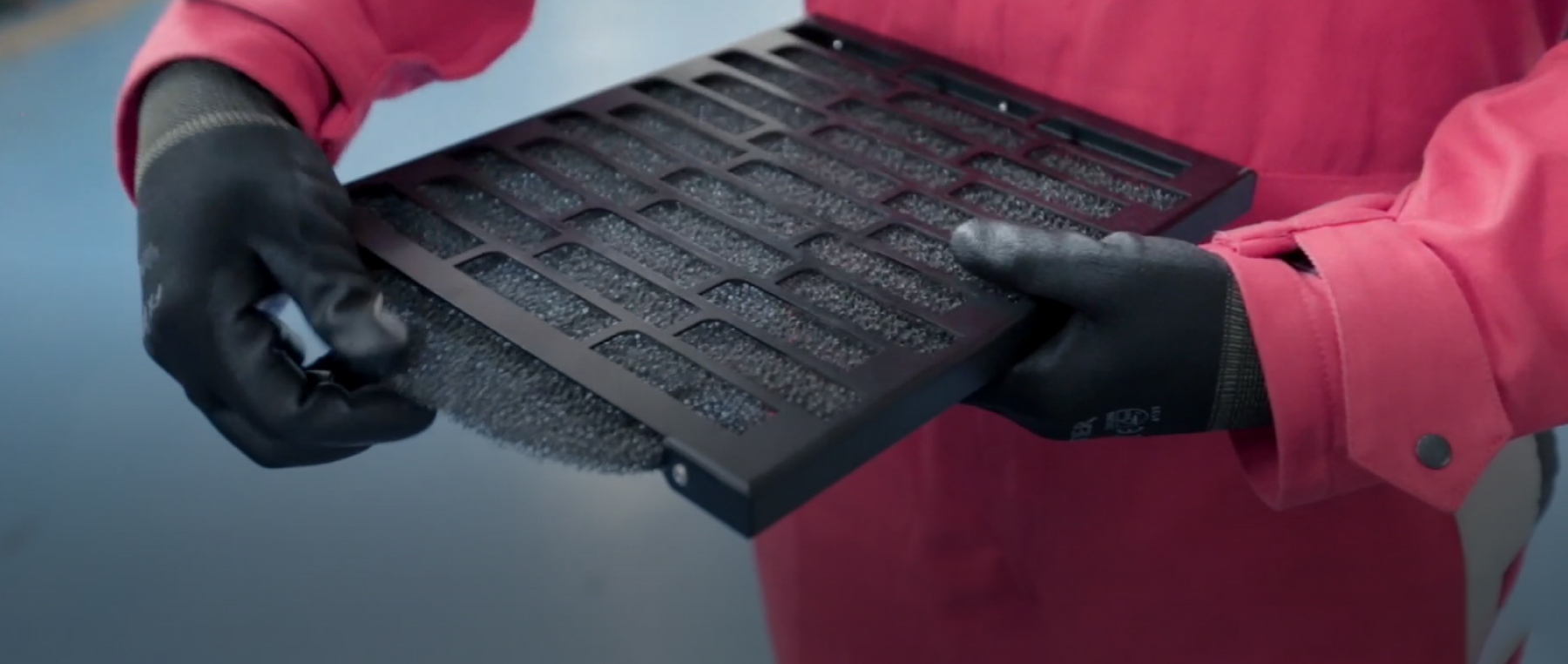
The atmospheric air comprises of moisture, particle contaminants, microorganisms and gases. When this air gets compressed, the concentration of such particles these increases by 6-10 times. However, when this atmospheric air gets compressed by a compressor, other contaminants like oil & traces of metal get added during the compression process. This is why, it is important to remove these contaminants from the compressed air before it is used for any application.
These contaminants can be categorized into:
1. Particles
2. Water (Liquid, vapor and aerosol)
3. Oil (Liquid, vapor and aerosol)
4. Microorganisms
5. Other gases
According to the International Standard, ISO 8573-1:2010, compressed air contaminants like particles, water and oil are segregated as per purity classes. In this standard, microorganisms and other gases are not included. As a result, the air purity is indicated as [P,W,O] and is ordered as per the amount of particles, water and oil.
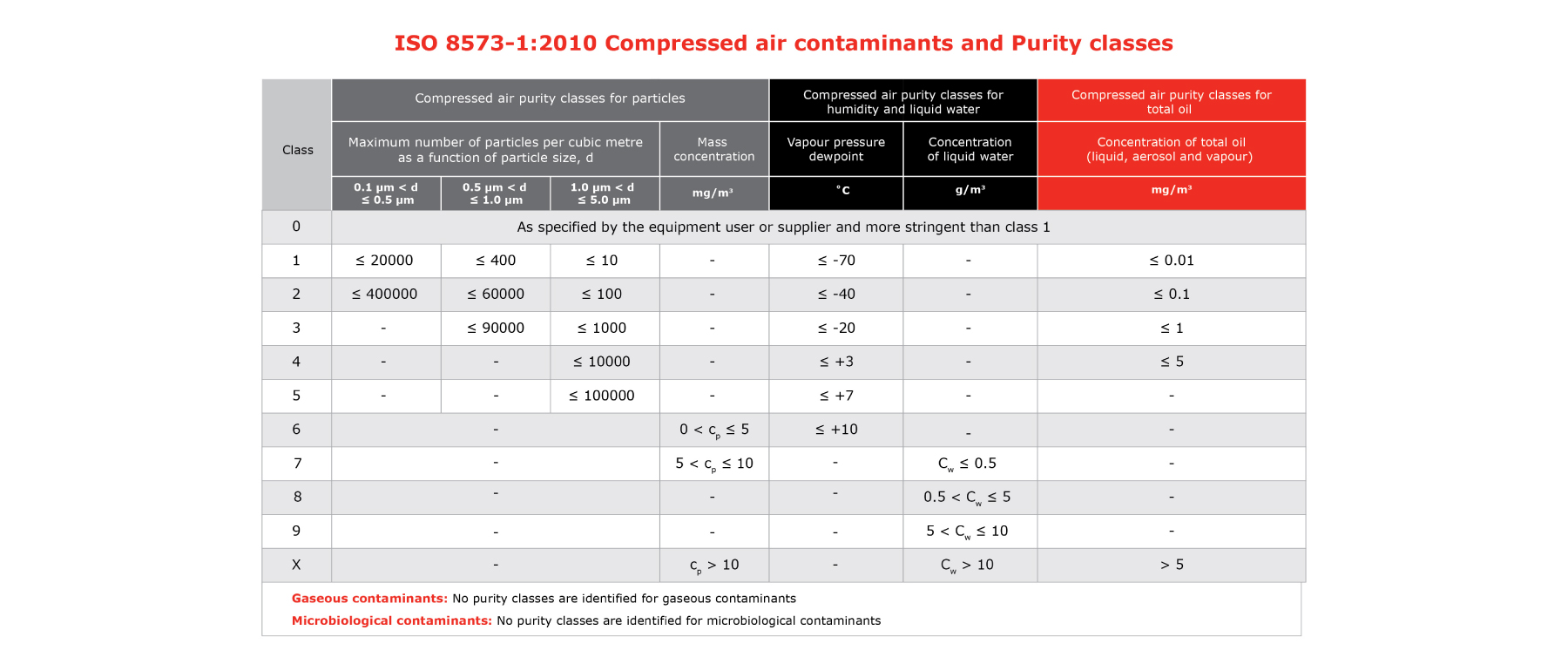
Based on the application requirement, contaminants are to be removed from the compressed air by using the suitable downstream equipment.
For instance, using downstream filters particle, water and oil contaminants can be removed from the compressed air.
Bulk moisture separators are recommended for removing the water from the compressed air.
- It is mandatory to have proper automatic drain along with the moisture separator, as they are mostly used after the cooler. The optimal removal of condensate will ensure that no bulk water carry over to the downstream equipment’s. It is recommended to use Level sensing zero loss drain along with moisture separator to get this done with minimum loss of air.
Downstream filters are available in various configuration/types. These can be categorized as per the the residual oil and particle after filtration and are, as follows:
- Coalescing filters are recommended to remove the wet particles and aerosols (water and oil) from the compressed air. Different types of coalescing filters are available based on residual oil and particle content at the filter outlet after filtration. Coalescing filter are mainly classified into two types:With the
- Pre-filter, class 3 or 2 purity of particles and oil can be achieved, i.e. ISO 8573-1:2010 [2: - :2]
- The recommended sequence of installation is the bulk moisture separator followed by pre-filter
- With the fine-filter, class 2 or 1 purity of particles and oil can be achieved, i.e. ISO 8573-1:2010 [1: - :2]
- The recommended sequence of installation is bulk moisture separator, pre-filter, dryer followed by fine filter
- Pre-filter, class 3 or 2 purity of particles and oil can be achieved, i.e. ISO 8573-1:2010 [2: - :2]
2. The particulate filter is specialized to remove the dry particle and microorganisms from compressed air. This filter is mostly used after a desiccant dryer to ensure that the desiccant particles are not carried to the compressed air line.
- The class of purity of particles made possible with this filter is 3,4,5&6, i.e. ISO 8573-1:2010 [3: - : - ]
- The recommended sequence of installation is the bulk moisture separator, pre-filter, Desiccant dryer followed by particulate filter
3. Carbon filters are recommended to remove the oil vapour and other gases present in the compressed air which are not removed by coalescing filters
- The class of purity achievable with carbon filter is ‘’1’’ , i.e. ISO 8573-1:2010 [-: - :1]
- The recommended preceding with carbon filter would be pre-filter, dryer, fine filter, followed by carbon filter
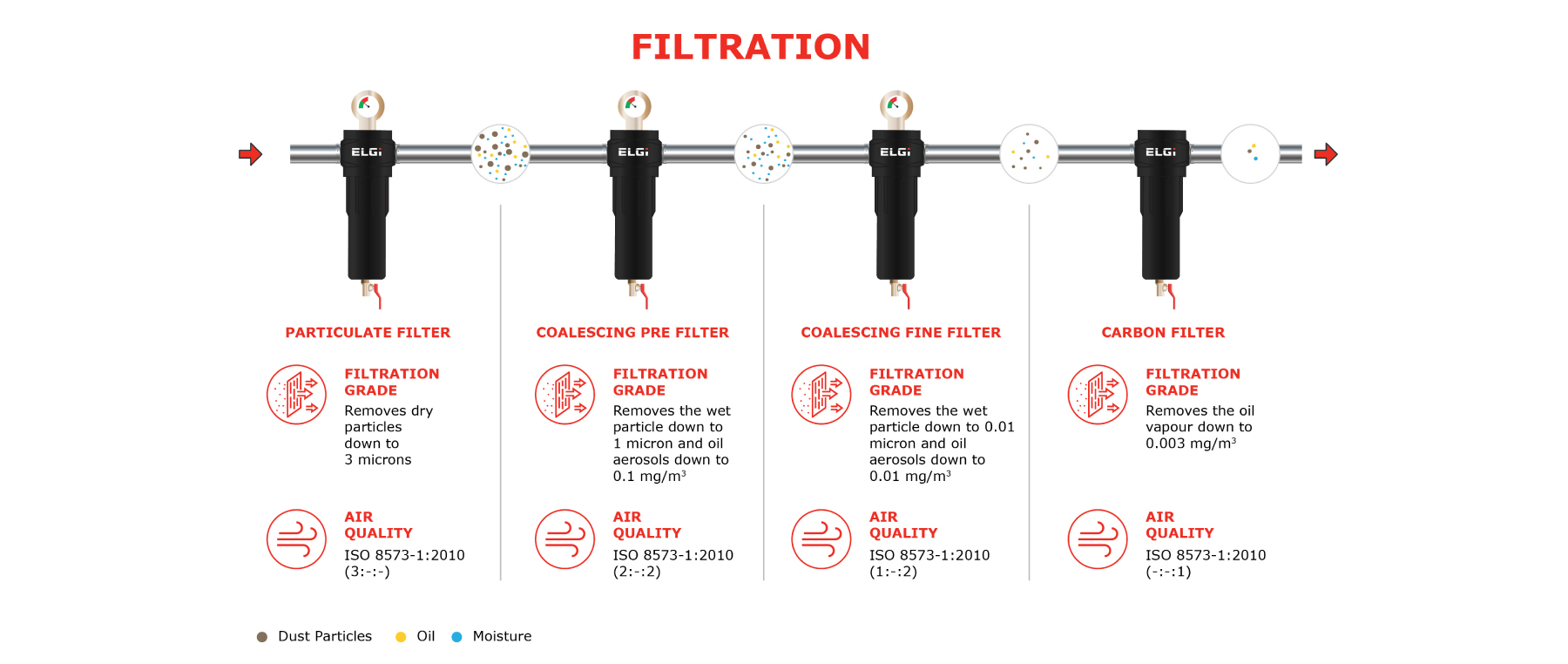
Important factors to consider for the right selection of filters and ensuring their optimal performance
- The filter capacity is based on the operating pressure of 7bar (nominal condition). In case the operating pressure is different, it is important to use the correction factor and select the filter model accordingly.
- The correct sequence of installing filters must be followed, so that the performance is optimal. As a thumb rulem the level of filteration should be in sequence, ranging from 20 ppm to 5 micron or from 10 micron to 1 micron to 0.01 micron. Carbon filters should always follow after the 0.01 micron filter. In absence of this sequence, it will choke up faster, and reduce the lifespan.
- Please note that the lowest pressure drop across filters happens when the filter elements are dry. If the filter element gets wet, delta P will increase. This is another reason why we should follow the above mentioned sequence.
- It is recommended to have a proper drain along with the pre-filter, since the pre-filter is mostly used before the dryer. The regular removal of condensate will ensure that no moisture carries over to the downstream equipment.
- The replacement of filter element at the recommended service interval is important. The filters have an indicator of saturation level and it is recommended to replace the filter element incase of indication. saturated filter element will not give the required class of purity. This will have higher pressure drop, creating an extra load on the compressor. As a thumb rule, 0.14bar/2 psi pressure drop will have 1% additional load on the compressor. Carbon filters function on the adsorption method and need to be replaced on a timely basis.
The oil emulsified condensate is collected from various downstream equipment and the compressor. After this, the condensate needs to proceed for oil removal before discharging to the sewage
If the oil emulsified condensate is discharged to the ground, the water will eventually evaporate, leaving the oil behind.
How to select an oil water separator to remove the oil from the oil emulsified condensate before it discharging to the sewage:
- Selecting the correct oil water separator and element is important for removing oil from the condensate within the permissible limits allowed in the region. This is expressed in terms of ppm units. Usually it is set from 10 to 15ppm.
- It is important to see that the oil water separator selected is compatible to operate with the compressed air and condensate mixture flowing through the condensate line.
- The PPM level after separation needs to be monitored thoroughly. If the PPM level is above the recommended level, then the element needs to be replaced. Some of the oil water separators also have a life indicator for elements to ensure ease in identification
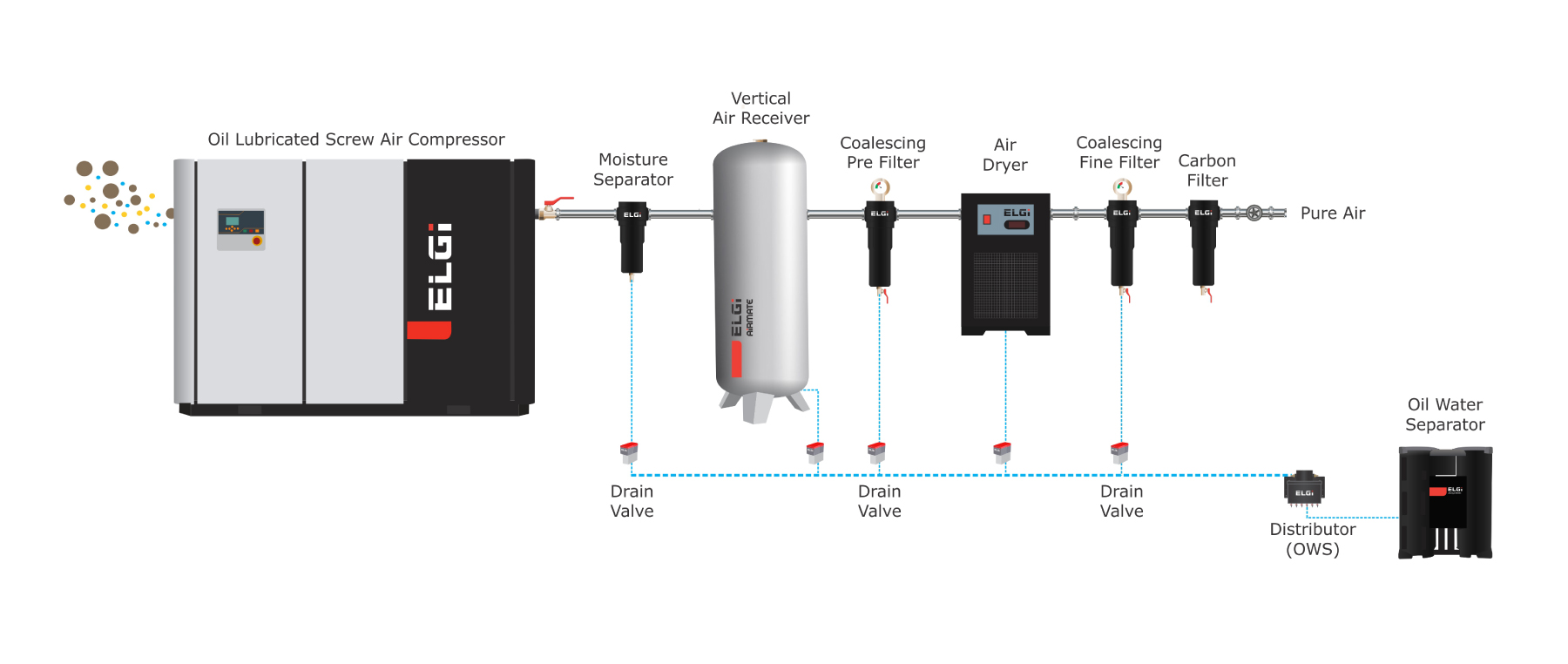
Best practices for removing contaminants from compressed air are, as follows:
- Selection of the correct size of moisture separators, so that maximum bulk moisture is removed from the system and is not carried over to the downstream equipment
- Selection of the correct coalescing filter type, rating, size and appropriate preceding level for the selected filters. Here, it is important to replace the filter element at proper service intervals.
- Electronic drains play an important role in removing the condensate from the compressor and downstream equipment. Here, it is important to properly maintain and replace an electronic drain regularly, as per recommendations.
- Dryers are a must before the fine filter and carbon filter so that the compressed air is free from water vapour. This is critical, as the vapor can choke the filter element. A particulater filter is recommended after the desiccant dryer before fine and carbon filter
- In case a small part of the application requires more stringent air quality, it is recommended to have an additional dryer and filter set near the point of use. Usually, this dryer could be a membrane or dessicant type giving a lower dew point.
- Monitor and check for leakage in the compressed air pipelines. A leakage can give a chance for the outside contaminants to get into the compressed air line. These leakages allow outside air to creep inside the piping when the compressor is stopped (when there is no positive pressure inside the pipe). This leak allows moisture to rust and carries other impurities inside the pipe, which, in turn, may get carried forward when the compressor restarts.
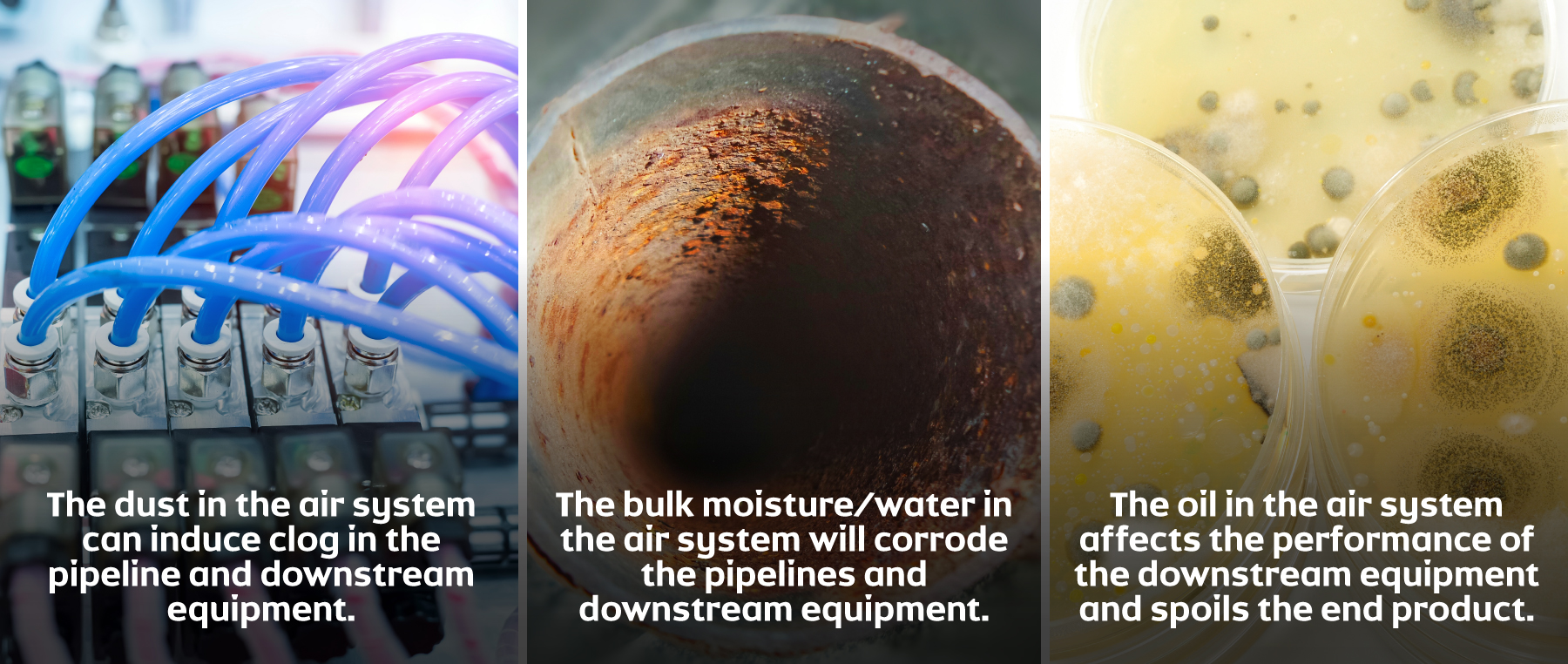
Conclusion: Once you have attained the purity class that is suitable for your application, it is important to maintain the same and not add any further impurity. Sometimes, this can happen with the usage of mild steel pipes and fitments shedding out rust in the line, which can reach your application. Therefore, it is recommended to use suitable piping like aluminium, or a suitable rust preventive coating like galvanized iron. Moreover, it is also recommended to check and replace these pipes based on their life and corrosion level.
